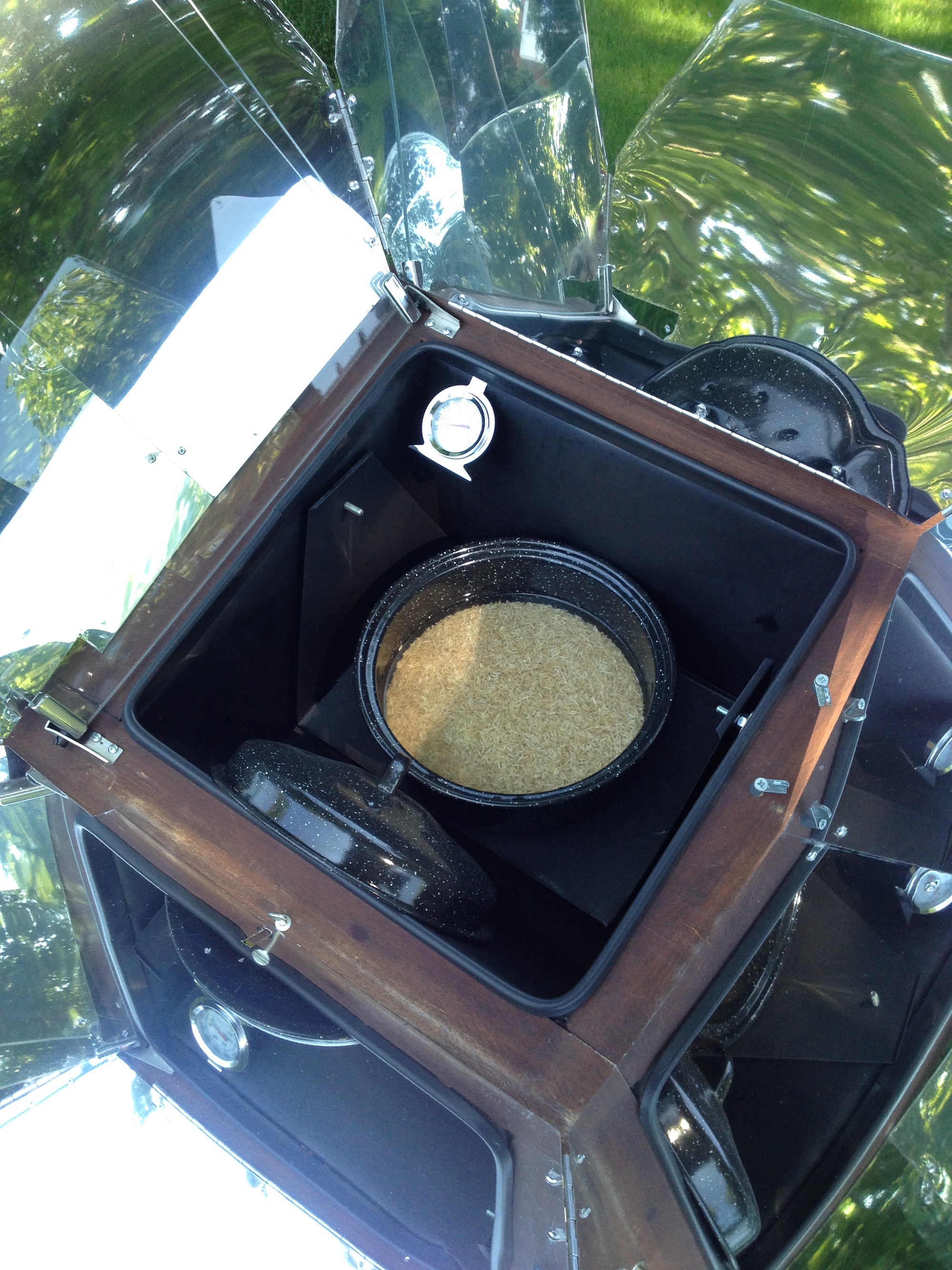September 19, 2018

“Hey, Wyldon! Are you cooking, again?”, says my neighbor when she sees me carrying a black pot to the box with all the mirrors in the side yard. It’s a mini workout putting the little plastic table right in the middle of the sunny part of the lawn. I lug the closed solar oven out through the kitchen door and prop it up on the plastic table, snap the mirrors into place and open the locked glass door. The black pot with the lid usually contains brown rice and water just like I’d make it on the stove. A joyful grin and I yell, “Yes!”
Its 10 am and the shadow of the bushes recedes. The sun quickly moves the oven temperature gauge needle inside the oven to 200 degrees Fahrenheit. The best tasting rice loves a hot soak before the real boiling finishes the job.
After an hour I’ll need sturdy pot holders to open the glass door and clear the way for the steam. The day isn’t done. I’ve got a small pot of quinoa to go into the box cooker next. Then, maybe hot water for tea.
Once I’ve made enough rice and quinoa to get me through a week, I’m happy to pull the mirrors down and carry the solar oven back into the house ready for the next day.
Because I live in the Bronx I’m experimenting with the months when the amount of sunlight hitting my yard is the greatest. There’s no better test than soaked beans and chickpeas which take 3 – 4 hours of cooking or much longer than rice, lentils, green peas, millet and quinoa. The nicest shift has been to reduce the amount of beans cooked. I’ve always cooked a little more than a pound of beans at a time on the kitchen stove. Isn’t it economical to boil up a large pot of beans? Not a factor when cooking with the sun making the solar cooker an efficient small meal cooker.
What’s more fun than getting the cooking heat out of the house in warmer weather and saving real cash on fuel? Sharing a sun cooked dish with friends and family.